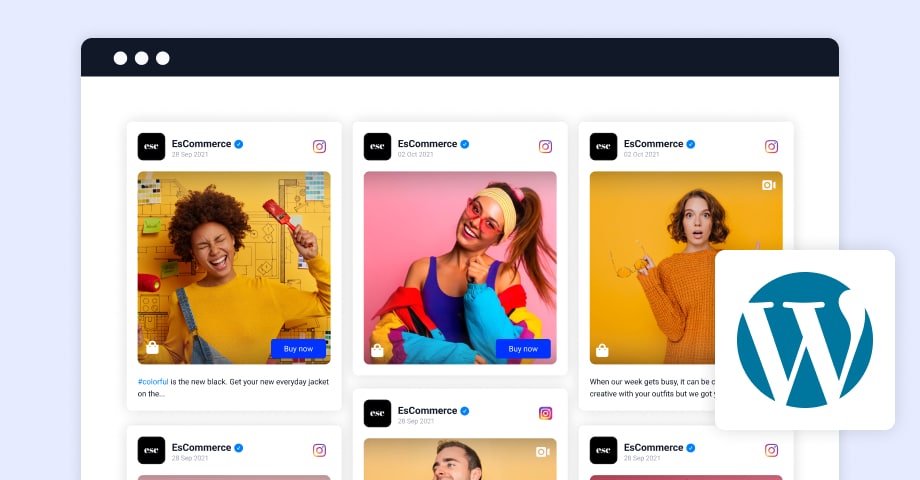Facebook grew from around 1 million users to over 845 million in 7 years.
Amazon.com grew in five years to 10 times the annual sales of Walmart, Target, and Buy.com combined (not to mention that Walmart and Target – together, have had about 150 years of growth to get there).
When it comes to growth and results, we tend to be drawn toward those that are eye-opening, astonishing, and “off the charts.” We don’t care about companies like Walmart or IBM, or websites like Yahoo (at least not anymore), because their growth was the kind of slow and steady kind that doesn’t seem to impress us much.
Instead, we get excited about the businesses and websites that explode onto the scene, blowing their competition out of the water.
They seem to descend upon us like wraiths; from out of nowhere…
We place these businesses on pedestals, as if they’re capable of so much more than the rest of us. But these companies and websites aren’t immune; somehow free of problems. In fast-growing companies:
- Business owners don’t always know why they’ve achieved their rapid growth. If they can’t measure and pinpoint precisely why they’ve grown, there’s a good chance they won’t be able to duplicate the results further down the road.
- It’s expensive. The cost of bandwidth, servers, physical office space, and personnel alone can get wildly expensive very quickly.
- It’s harder to react. Larger companies, especially those that have experienced rapid growth are notorious for moving much slower than their smaller counterparts.
It might not be a great plan to shoot for rapid exponential growth for your own business to get more followers. Whether it’s a blog, a web app, or offline business, there’s a much better long-term strategy for your business:
The “Slow-Drip” Method
Unlike fast-growth methods that rely on viral marketing strategies and word-of-mouth strategies that are almost impossible to predict, the “Slow-Drip” Method of growth is a strategy that can be implemented in any size business, large or small.
Essentially, the goal is to “capture” more fans (more buyers, more followers, more users, more evangelists, etc.), one at a time.
The long-term snowball effect of capturing 1,000 true fans is not a new concept, but it’s one that can use some revisiting.
In a fast-paced world, we’re more apt to want to capture as many fans as fast as possible, churning them through the sales funnel with rapid-fire succession.
The “Slow-Drip” Method Turns That Idea on its Head.
Instead, the “Slow-Drip” Method of growth focuses on finding and building targeted, long-term relationships with fans, individually. These fans build the value of the brand over time, and lead exponentially to more opportunities than a single ad or marketing campaign can provide.
The urge is to get them in the door and sell, sell, sell. But Slow-Drip sales happen over time like, well, a “slow-drip” coffee maker (Insert awesome Glengarry Glen Ross reference here). Ready to figure out how you can use the “Slow-Drip” Method for yourself.
Drip 1: You Are Your Target Market
I gave a speech to a group of college entrepreneurs a few years back on marketing for small business. The main point was that “you are your target market.” Of course there are exceptions, but it’s usually rare to come across an entrepreneur, blogger, or small business owner who didn’t build their product because they were trying to solve a problem they’d experienced personally.
In that regard, treat your marketing as if you’re marketing to yourself. Check out this Mirasee post on finding your ONE Person, and actually answer the questions (click “Share” and download the one-sheet PDF).
As you go through it, you might find that your One Person looks an awful lot like yourself, at some stage of your life.
Here are a few important things to realize about declaring yourself as your target market:
- If you can’t market to yourself, you can’t market to anyone (or at least, you shouldn’t)
- If you are your own target market, you already know exactly how to connect, engage, and write directly to your core audience
Finally, read this great post on “knowing thyself” to help chisel out your USP. Start creating copy and marketing “drips” that speak directly to you as a customer or reader. When you write, speak in the second-person (“you, your, y’all”) active voice and pretend like it’s you you’re talking to.
Drip.
Drip 2: Build Systems
I love systems, and you should too. They can sometimes take awhile to set up, but once they’re in place, systems can become the closest thing to a “set it and forget it” marketing campaign that we’ll ever see.
Use systems to:
- Follow up. Have an autoresponder system in place for just about every line of communication. Did they leave a comment on your blog? Send them a prepared form email from your personal account thanking them for stopping by.
- Manage communication. Sites like IfThisThenThat and Buffer help manage what I like to call “automated communication,” and sites like Engag.io can help keep the conversations under control.
- Automate outreach. This is my favorite example, because it lets the use of leverage shine through. You can set up a service like CloudFlood to create a “Tweet/Share to Download” system, similar to what Danny’s using in the “know thyself” article I mentioned above. You offer a great resource, and people have to share it with their networks to get it.
The reason you want to employ systems is that it lets you leverage your time, and frees you up to spend it interacting with customers. The more time you have to spend developing products, engage through social media, or add value to their lives, the stronger your “brand evangelists”—your customers—will promote you.
Spend some time and effort building and implementing great systems now, and it will be worth it in the long run!
Drip.
Drip 3: Use the 80/20 Rule
Ever heard of Vilfredo Pareto? Okay, well go read this and come back. I’ll wait.
Pareto’s Principle basically states that, “80% of the results are provided by 20% of the effort.” The opposite is also true.
For your business, think about this for a second: How much work are you getting done throughout the course of the day that truly builds value for your company? If you analyze the amount of output a given input has, I’d predict that your best (read: most efficient) times throughout the day aren’t as long or recurring as you would have thought.
So, the last “drip” of this process is to start using the 80/20 Principle whenever you can. This is especially easy in the context of social media and marketing online:
- 80% of the time (at least), share the stuff from other people in your network. The other 20% of the time, share your own.
- Overall, focus on adding value to your customer and fan base 80% of the time, and 20% of the time work on building your business and systems.
As an aside: The first business I ran (a music publishing company) ultimately failed because I spent more time building and tweaking systems, rather than trying to consistently add value to my customers’ lives. Don’t get bogged down in creating the best internal systems—let them be.
Oh, and just so we’re clear, pretty much anything can “add value” (Here’s a link to a social media article that helps as well). But I’m talking specifically about those things your customers have come to expect:
- Writing (blog posts, white papers, books, etc.)
- Engagement (client/lead follow-up, social media, outreach)
- Product development
- Etc…
Get it? Good.
Drip.
It Takes Time…
…and that’s the point. There are so many businesses that won’t take the necessary time to build their “1,000 true fans” core audience. They’ll suffer in the long run from a withering brand image and wonder why their widgets and products aren’t being purchased.
Instead, be the type of company that offers such remarkable value through your online and offline conversations with customers that they want to be a part of your long-term growth strategy.
I read once that 37signals doesn’t have a “feature request” forum—they just listen with a broad ear to the general noise and buzz around their community. Their community is vibrant, active, and vocal—and the problems, features, and requests that keep getting mentioned are the ones 37signals end up providing solutions for.
It seems like such a basic idea, but I’m afraid that many of the companies whose products I purchase won’t ever hear from me about the problems, issues, and “feature requests” I have. They haven’t spent the time building a relationship with me through a “slow-drip” process.
Tying it all Together
You probably already have a conceptual idea of how you might use the “Slow-Drip” Method in your own business, but are hesitant for one reason: I’ll go ahead and answer that “million-dollar question” right now.
“Can the ‘Slow-Drip’ Method be sped up?”
Of course. That’s the whole point. Companies that implement a slow-drip process in their outreach don’t end up going slower in the long run—they just have a better foundational understanding of customer engagement.
For you, start with the idea of “capturing one person at a time” and adding them to your loyal “true fan” base. As your “Slow-Drip” Method becomes second nature, it will pick up traction and start working on its own (you did take the time to build systems, didn’t you?).
Don’t focus on creating viral right out of the starting gates. Instead, let viral happen organically as you grow.
I’ve never had good instant coffee. No matter what kind it is, it always tastes better when it’s been slowly dripped into my cup…
So what does the “Slow-Drip” Method look like for you? What is one thing you can implement today (a system, approach, or tactic) that will get your business closer to using a “Slow-Drip” Method and getting more followers? Sound off in the comments!



